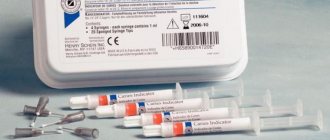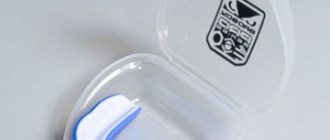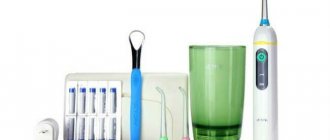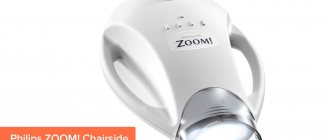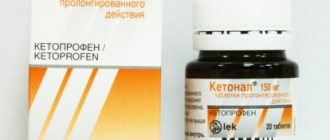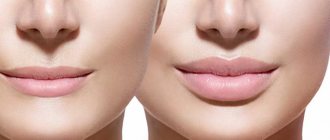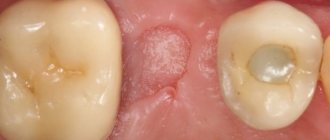Relatively recently, Californian scientists made a breakthrough in the field of dentistry, which is associated with the development of a new material that does not differ in appearance from dental bone, and is not inferior in strength to other composites - fiberglass.
It is used for the manufacture of intracanal fiberglass pins, which are used to restore damaged dental crowns. In addition, it helps eliminate pathological mobility of the dentition (splinting method) due to the development of periodontitis or periodontal disease.
Fiberglass: what kind of material, why are dentists interested?
This material is basically ordinary glass.
It is prepared by spraying the glass mass with a stream of air. But for dental applications, the method of pulling through thin fillers (high-strength molds for making plastic and glass) is used. After this, the thinnest threads (10 microns) are obtained, which are connected using epoxy resin. Fiberglass is used in the following cases:
- Fiberglass tape is used when there is a need to splint loose teeth as a result of periodontal pathologies. It can also be used after corrective therapy using braces. This allows you to consolidate the result.
- Fiberglass rods help restore damage to the crown of the tooth (used as a base).
- If the tooth root is preserved, then the introduction of a fiberglass rod allows you to create a support for the bridge.
Fiberglass material and products made from it have the following properties for use in dentistry:
- relatively high strength allows you to withstand heavy loads that occur when chewing food;
- a strong connection between the tooth root and the crown is ensured;
- the composition does not contain toxic substances or components that cause allergies;
- full compatibility with other composite materials (does not lead to corrosion and oxidation);
- the elastic modulus almost completely coincides with natural dentin (a monolithic design is ensured);
- does not have a mechanical effect after insertion into the root canal of a tooth (the walls of the canal are not damaged over time).
Indications and contraindications
The method of eliminating dental defects is determined by the dentist. At the same time, its choice also depends on many factors; a full diagnosis is required.
To prescribe a fiberglass pin for treatment, the specialist is guided by the following parameters:
- A large degree of defect in the upper part of the tooth , more than fifty percent, or the potential for complete loss.
Then restoration is possible only by using a pin structure onto which a filling made of composite materials is fixed. But the root must be absolutely healthy. - The use of pins is indicated when the root is weakened after therapy. This technology will strengthen the canals and the entire tooth;
- Fiberglass pins are used in removable prosthetics as a basis for attaching a prosthesis or bridge. With this technology, it is possible to preserve the tooth root;
With a large number of advantages and purposes for a wide range of diseases, there are a number of restrictions when the installation of pins is strictly prohibited:
- The root canal shell is thinner than two millimeters;
- Extensive caries lesions in many areas of the dentition;
- Non-standard (short) root;
- The root canal has an irregular shape that cannot be modified to a round shape;
- The upper part of the tooth is completely destroyed;
- Poor blood clotting, including congenital diseases of the circulatory system;
- Pregnancy and lactation;
- Psychological abnormalities;
- Serious periodontal diseases;
- Cystic formations in the soft and bone tissues of the jaw.
Fiberglass pins: pros and cons
Practitioners compare the pin with reinforcement that is used in construction. It is the connecting base between the root and the upper part of the tooth. Its use makes it possible to restore a dental unit even with severe destruction. In this case, the functionality of the surface crown is completely restored, and the transparency of the glass fiber does not cause a cosmetic defect when restoring the anterior incisors.
Fiberglass pins have all the properties inherent in this material. Moreover, compared to metal or ceramic, they have the following advantages:
- During restoration, a monolithic structure is created, which allows you to evenly distribute the load during the process of chewing food. This prevents further tooth decay.
- The absence of harmful components allows the products to be used even by people who are prone to allergies.
- The color shade of the material practically does not differ from enamel, and therefore there is no need to use additional masking agents.
- Installation does not require grinding of the dental unit, and a fiberglass rod is much easier to remove than a metal one.
The disadvantages of these models include the fact that they cannot be installed if the following contraindications are present:
- the rim of tissue around the tooth is thinner than 2 millimeters;
- the height of the crown is higher than the root canal;
- the tooth being restored rises above the gum by less than 2 mm;
- severe destruction of the root or cystic compactions and granulomas are located on its surface;
- pronounced defects of dental tissue;
- advanced forms of blood and nervous system diseases.
All of the above disadvantages are a complete contraindication to the use of fiberglass rods.
Recommendations for the use of IKADENT fiberglass pins
1 Before use, the pins are removed from the packaging and sterilized in accordance with MU-287-113. It is also necessary to prepare in advance the reamer and cutters necessary for installing the pin, which are purchased separately.2. In accordance with commonly used standard methods, the coronal part and canal of the tooth are treated, incl. removal of altered tissues and preparation of the canal for obturation. It is highly advisable to use a rubber dam throughout the entire operation.
3. The root canal is expanded using a Peeso or Gates drill while simultaneously creating guidance for the intraradicular portion of the post.
4. In the case of using pins of models E01, E02, E03, a flat seating bed is formed under the shoulder of the pin using an end mill with a guide rod.
Pin
| Milling cutter, marking | |
| E01 | f 2.5 mm, one ring |
| E02 | f 2.9 mm, two rings |
| E03 | f 3.5 mm, three rings |
5. Final expansion and smoothing of the walls of the root canal using the final development until it fully matches the intra-root part of the pin.
| Pin | Ream marking |
| A01 | MANI Peeso #3 or Largo #3 |
| A02 | MANI Peeso #4 or Largo #4 |
| A03 | MANI Peeso #5 or Largo #5 |
| A04 | MANI Peeso #6 or Largo #6 |
| B01 | Unimetric C 0213 008, purple rings |
| B02 | Unimetric C 0213 108, white rings |
| B03 | Unimetric C 0213 110, blue rings |
| E01 | Unimetric C 0213 008, purple rings |
| E02 | Unimetric C 0213 108, white rings |
| E03 | Unimetric C 0213 110, blue rings |
6. Pin fitting. When fitting, you must make sure that the pin is immersed into the channel without force to the full depth, and the shoulder of the pin (for models E01, E02, E03) rests on the seating bed. If necessary, the coronal part of the pin can be processed with a diamond tool to give it the desired shape. It is possible to shorten the coronal part with a diamond disc or bur. You cannot use forceps, wire cutters, or other similar tools to shorten the pin to avoid damage to the internal structure of the pin from excess pressure.
7. Adhesive preparation of the pin, channel and seating bed is carried out according to the recommendations of the adhesive manufacturer.
8. Preparation of cement. Dual-curing composite cements are recommended, e.g. RelayX (3M), MaxCem (KERR), CLEARFIL (Kuraray), Choice (Bisco), Variolink (Vivadent). Filling the canal with cement, inserting a pin into the canal, curing the cement according to the manufacturer's instructions.
9. Further restoration of the coronal part is carried out by a dentist using a composite or metal-ceramic crown according to the generally accepted method.
ATTENTION! Cutting/turning or other processing of the post directly in the oral cavity is prohibited.
When is the use of products justified?
The main purpose of using pins is to prepare the tooth for restoration using filling materials. They are also used as a support for prosthetics.
In addition, tooth restoration with a fiberglass pin is justified in the following cases:
- if there is a need to restore a dental stump after long-term endodontic treatment;
- when severe damage to the walls of the tooth occurs, as a result of which its integrity is compromised;
- if an allergy occurs to other materials or a galvanic effect develops in the oral cavity.
Installation and fixation algorithm
To install fiberglass pins, you must agree with your dentist on what the color of the future tooth will look like after the restoration. An X-ray is required, and in some cases, computer diagnostics are performed to assess the condition of the bite.
The algorithm for installing and fixing the pin is performed in the following sequence:
- Using drills of different diameters, the root canal is expanded to the required value. The hole must match the diameter of the inserted rod.
- After disinfecting the hole from pathogenic microflora, so that moisture does not penetrate, an overlay plate (cofferdam) is used, which isolates the tooth from the rest of the oral cavity.
- Preliminary fitting will be considered successful if the length of the product when immersed in the root hole is not less than the height of the dental unit.
- Adhesive measures are accompanied by degreasing with an alcohol solution and phosphoric acid. After this, the surface is washed and dried.
- The fiberglass rod is treated with alcohol and dried in air. To ensure a strong fixation, sandblasting is additionally carried out, after which the product is treated with phosphoric acid.
- Immediately before installation, the hole is filled with an adhesive composition (double-cure cement is most often used). A similar adhesive base is applied to the pin, and the amount of composite should not exceed the volume of the rod, and it is placed in the hole.
- At the final stage, excess cement is removed and light polymerization is performed. If a ceramic or metal crown is placed on the stump, then there is no need for careful finishing. It is produced in the absence of a coating, for which the tooth surface is ground and polished.
This procedure must be carried out by a qualified professional, otherwise inaccurate installation may split the root in half. Then the dental unit will have to be removed.
Titanium pins
Titanium pins are made of titanium alloy, which provides them with exceptional strength, lightness and full biological compatibility with the human body. This material is stronger than steel, does not corrode even in the chemically aggressive environment of the oral cavity, does not form dangerous compounds, does not cause allergic reactions and has low heat transfer. Compliance of the sizes and color codes of the end markings with the standards familiar to the doctor creates additional convenience when installing the pin.
Popular manufacturers, models and prices
There are many companies in the pharmaceutical market that produce fiberglass products for use in dental practice.
Glassix
The Swiss company HaraldNordin (Glassix) produces cylindrical fiberglass pins with a rounded end. Orthopedic rods are available in three sizes (1.20, 1.35 and 1.50 millimeters).
Their demand is explained by the high strength of the product, elasticity and light conductivity. They are close in structure to tooth tissue.
The cost per unit of product is within 800 rubles.
Pictured are Glassix pins:
Ikadent
The Russian company Ikadent is not inferior in quality to its foreign counterparts, as it produces various modifications of orthopedic products.
The model range has the following varieties:
- cylindrical, with a rounded end;
- cylindrical-conical shape of the pin, available in 3 versions of different diameters (1.25, 1.4, 1.55 mm);
- A rod with a collar allows you to perform tooth restoration without preliminary formation of a stump.
Most practitioners note the following positive qualities when choosing Ikadent pins:
- increased elastic modulus, which is equal to 35 GPa;
- volumetric restoration becomes possible if a model with a collar is used;
- no need for special treatment (to increase the degree of adhesion).
The cost of one pin does not exceed 1500 rubles.
Ikadent pins in the photo:
Relyx Fiber Post
Country of origin: USA. The maximum length of the product is 20 mm, the cross-section in diameter is 1.3, 1.6 and 1.9 mm. The selection of a rod is carried out by comparing tabular data.
Fiberglass systems have the following properties:
- high strength composer material;
- same color;
- The special design allows you to fill the tooth canal without forming pores.
In Russia, the price does not exceed 6,000 rubles per unit.
Easy Post
The trademark of the French company Easy Post allows the use of a prosthetic rod for the anterior incisors.
This is due to the transparency of the material, since it consists of 40% epoxy resin, and 60% of glass fiber has been enriched with zircon.
The average price of Easy Post pins is around 4000 (per piece).
Fibrapost Lux
The Swiss company has ensured high elasticity of its products due to its unique composition. The product consists of 20% woven fiberglass.
In addition, special grooves are applied to its surface, which increase the connection with the root canal system. Transparency is another advantage of this model range (it allows you to restore your front teeth without compromising the aesthetics of your smile).
These products have a price starting from 5,000 rubles.
Reviews from experts
I’m moving to work at a new clinic: they don’t treat fiberglass pins very well. But I believe that there are indications for their use - if an intact tooth or one with a small defect above the gum is depulped. At the same time, do not perform extensive resection of dentin during depulpation. The preparation must be based on the rim rule. I am a proponent of using pins as indicated, and believe that fiberglass is better than a metal pin.
Mark, dentist
I have not encountered any fractures of fiberglass pins. There were cases of decementing - I believe that in these cases either the adhesive fixation protocol or the “rim” rule was violated. There were roots with stump inlays. A 4-year clinical study was conducted evaluating teeth restored with fiberglass posts and core inlays. Fiberglass pins showed better results.
Sergey, dentist

